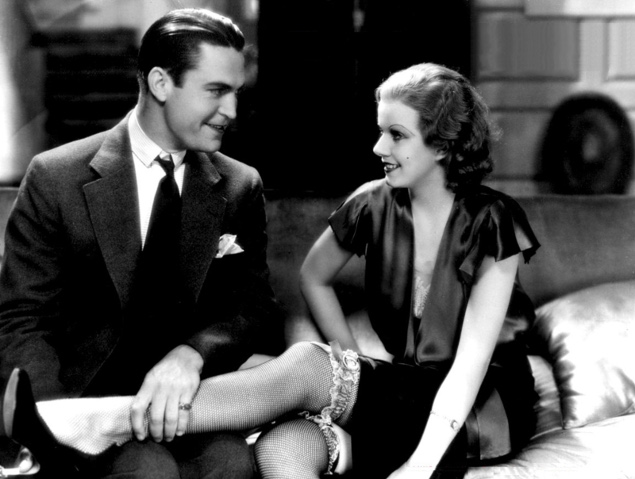“So gentlemen prefer blondes, do they?”
What a way to open a film. . . famed platinum blonde Jean Harlow, face wrapped in a hot towel at a beauty salon, utters this self-referential line (in many ways breaking the fourth wall and speaking directly to the audience – her hair now dyed red), only for things to delve into more intriguing terrain. . . the next snippet finds the dame trying on a dress – asking if you can see through the material, the shop worker answers in the affirmative, to which she perkily states, “I’ll wear it”. Vignettes with a purpose, each moment gives us a viewpoint into the world of one Lil Andrews (Harlow), a Red-Headed Woman with a plan.
Adapted by Anita Loos (who also wrote the novel Gentlemen Prefer Blondes – another in-joke revolving around the line above; her screenplay is based upon a book by Katharine Brush), and directed by Jack Conway, this 1932 film is another prime example of a pre-Motion Picture Production Code (aka Hays Code) feature: edgy, controversial, and more than suggestive. Featuring a meaty role for the female lead, Andrews is the type of gal who flaunts her stuff (not without purpose), each well calculated step towards that posh country club, slyly manoeuvring to extricate herself from that place known as ‘the wrong side of the tracks’.
Her sights are set, rather heavily I might add, on her boss, Bill Legendre Jr. (Chester Morris), a man who is happily married to his elementary school sweetheart, Irene (Leila Hyams). Such trifles do not faze Andrews, forcing her way into the man’s mansion under the pretext of aiding him in answering his urgent mail (that she herself delivered).
Irene, away until tomorrow, decides to drive through the night to surprise her man, but, alas, she is in for her own unwanted surprise. Causing a rift in their relationship, Andrews continues to pry and tinker, prod and suggest, attempting to eradicate any chance of the pair rekindling things.
Soon after, the couple have divorced, and Andrews has found her ways into the arms of an oft-drunk Bill. But, now that she has made it onto the other side of the tracks, she has to deal with a whole new set of issues. . . frowned upon by the quite conservative upper class, Bill is constantly asked to parties sans femme, making for one unhappy housewife.
Aiming to break down this barrier, Andrews looks to the top of the pyramid, coal baron Mr. Gaerste (Henry Stephenson), knowing that if he leads the way, the others will follow. Lest we forget the woman’s drive for ascending the social ladder. . . will she be able to convince Gaerste to follow her plan, and, if so, how? Does this much more wealthy suitor (who is also quite a bit older) put new thoughts in the dame’s head, perhaps causing issues within her present marriage? What about Gaerste’s French chauffeur (an early role for Charles Boyer), with his fancy accent and accentuating mustache. . . could he too be a hitch?
An interesting balancing act, Loos was actually brought in to give this picture a lighter tone. They had originally hired F. Scott Fitzgerald to scribe the piece, yet his first draft took a more serious angle, something producer Irving Thalberg was not impressed with (despite liking the idea of having the Fitzgerald name attached to the project). In Loos’ hands, cheeky dialogue abounds, double entendres and well coined phrases like “she’s strictly on the level like a flight of stairs”.
The ninth highest grossing picture of 1932, Red-Headed Woman was a mega-hit – and you can see why. Playful yet edgy, comedic yet controversial, a saucy feature that glows with Jean Harlow’s leading lady effervescence – shining on camera, in many ways, the final step towards her super stardom. Though the Hays code was not of major concern as of yet, producer Irving Thalberg worked with the office on the edgy picture, agreeing to make seventeen cuts (it would be fascinating to see exactly what was deemed more troublesome than what is seen onscreen), though the movie is more than envelope pushing as is – Harlow swapping pajamas with her best friend (the sly camera-work has long had people believing they’ve seen some Harlow nudity), while sexual double entendres and rather suggestive female advances are evident throughout the film. It also concludes in a rather shocking way for the time (an ending that, in many ways, helped speed up the strict usage of the Production Code). So, don’t feel like you’re getting away with murder, check out this Red-Headed Woman, it is a wealthy experience.



